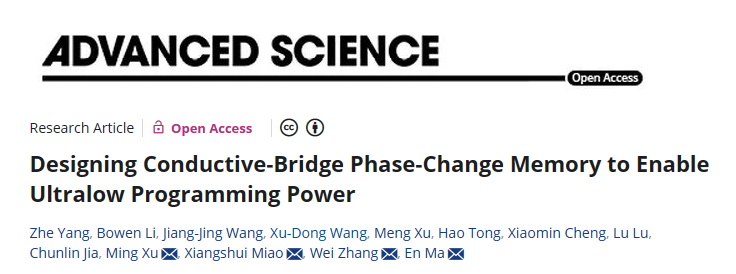
Phase-change material (PCM) devices are one of the most mature nonvolatile memories. However, their high power consumption remains a bottleneck problem limiting the data storage density. One may drastically reduce the programming power by patterning the PCM volume down to nanometer scale, but that route incurs a stiff penalty from the tremendous cost associated with the complex nanofabrication protocols required. Instead, here a materials solution to resolve this dilemma is offered. The authors work with memory cells of conventional dimensions, but design/exploit a PCM alloy that decomposes into a heterogeneous network of nanoscale crystalline domains intermixed with amorphous ones. The idea is to confine the subsequent phase-change switching in the interface region of the crystalline nanodomain with its amorphous surrounding, forming/breaking “nano-bridges” that link up the crystalline domains into a conductive path. This conductive-bridge switching mechanism thus only involves nanometer-scale volume in programming, despite of the large areas in contact with the electrodes. The pore-like devices based on spontaneously phase-separated Ge13Sb71O16 alloy enable a record-low programming energy, down to a few tens of femtojoule. The new PCM/fabrication is fully compatible with the current 3D integration technology, adding no expenses or difficulty in processing.
Link:https://onlinelibrary.wiley.com/doi/10.1002/advs.202103478